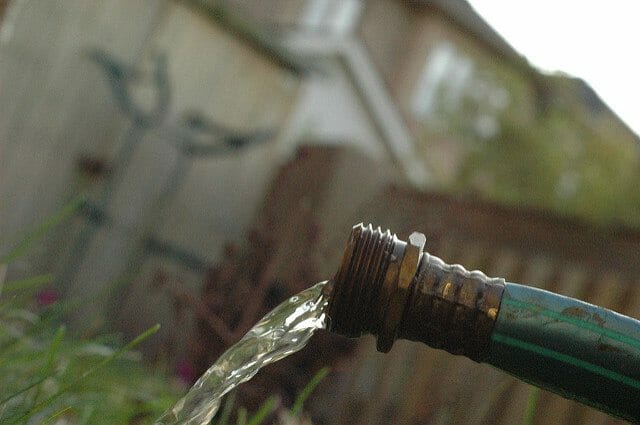
 The average homeowner uses roughly 320 gallons of water per day, 30% of which is used on lawns and for other outdoor applications, according to the Environmental Protection Agency (EPA). This often results in high water bills during the dry summer months, especially for homeowners with large gardens and lawns. Being that grass and plant life needs water, though, you can’t necessarily turn it off. However, you could potentially save money by collecting and reusing rainwater — a trend that’s become increasingly popular among homeowners.
The average homeowner uses roughly 320 gallons of water per day, 30% of which is used on lawns and for other outdoor applications, according to the Environmental Protection Agency (EPA). This often results in high water bills during the dry summer months, especially for homeowners with large gardens and lawns. Being that grass and plant life needs water, though, you can’t necessarily turn it off. However, you could potentially save money by collecting and reusing rainwater — a trend that’s become increasingly popular among homeowners.
Rainwater Harvesting Ranked as #1 Outdoor Design Trend
The American Society of Landscape Architects (ASLA) recently released the findings from its annual survey on outdoor design trends. Each year, the ASLA surveys residential homeowners throughout the country, asking them for their thoughts and opinions regarding outdoor design trends. According to the survey, rainwater is the single most popular outdoor design trend for 2016, followed by native plants, drought-tolerant plants, low-maintenance landscaping, permeable paving, and fire pits/fireplaces.
In comparison, rainwater harvesting was ranked #10 in last year’s survey.
There are several advantages to collecting and reusing rainwater, one of which is the cost-savings it provides. Instead of paying for municipal water, you can use rainwater. As noted by ASLA CEO Nancy Somerville, rainwater collection systems are also a part of sustainable landscape architecture, which is another reason why so many homeowners are installing them.
“Water issues are hot topics for many communities, and many people are turning to landscape architects for creative green infrastructure solutions,” said Nancy Somerville, CEO of ASLA. “Sustainable residential landscape architecture, if part of a broader integrated site design, can dramatically reduce water usage and stormwater runoff over the long term while creating a healthy residential environment.”
Is it Legal?
This is a question that many homeowners ask. Before starting any major home improvement project, including a rainwater harvesting system, you should check to see if it’s legal in your respective state and county. Most states have at least some laws governing this practice. In Oregon, for instance, homeowners are allowed to collect and reuse rainwater, but only if it’s collected from their roof. Rhode Island, however, now only allows rainwater harvesting, but also encourages it by offering a tax credit. Residential homeowners in Rhode Island can receive a tax credit of 10% of the cost of the rainwater collection system, with a maximum credit up to $1,000.
Photo credit: Tai
If you have any questions regarding how an S&S Fire Pit can enhance your outdoor living space; We can help. https://ssfirepits.com/contact/


